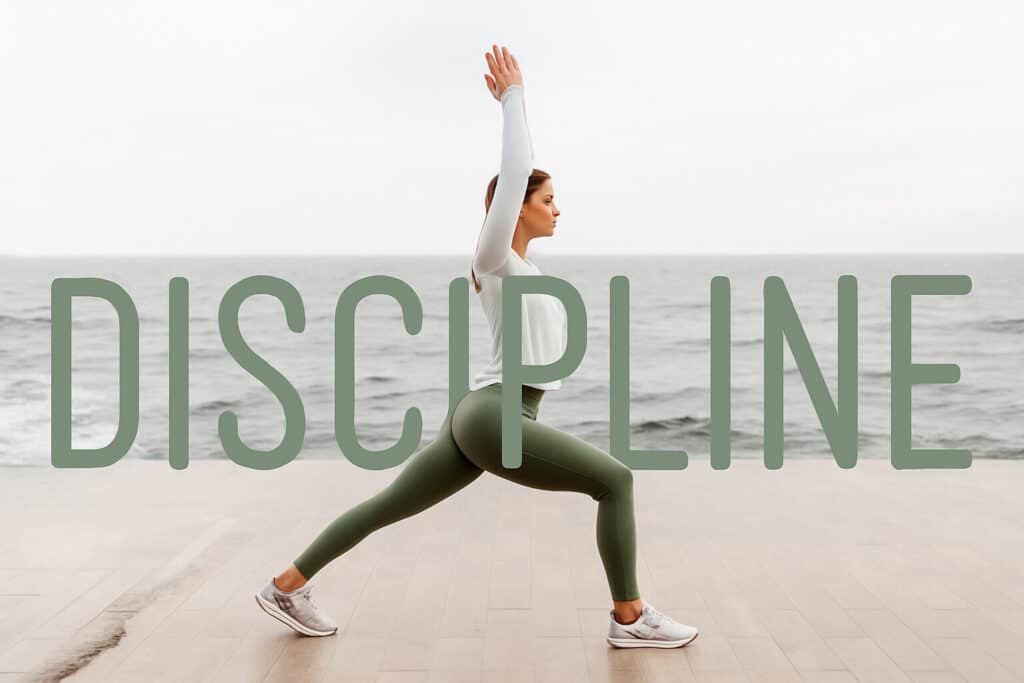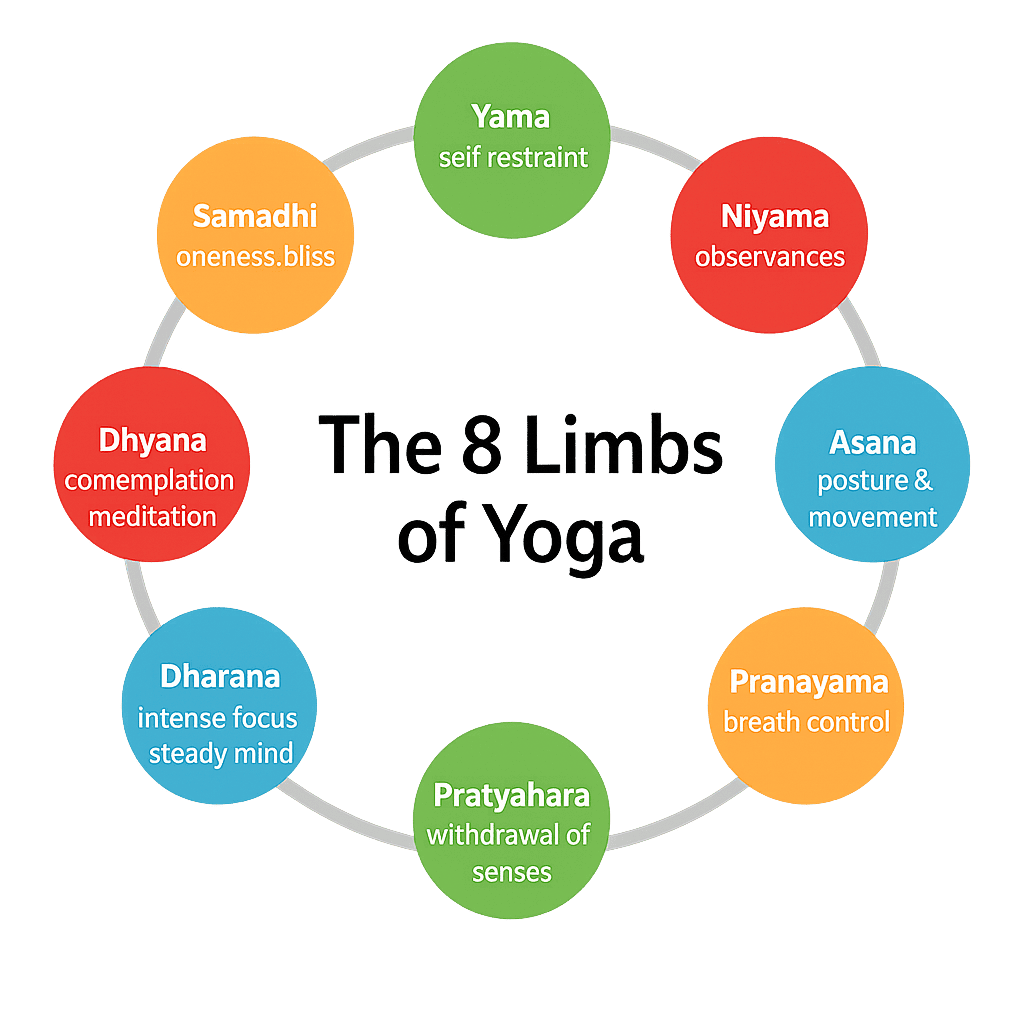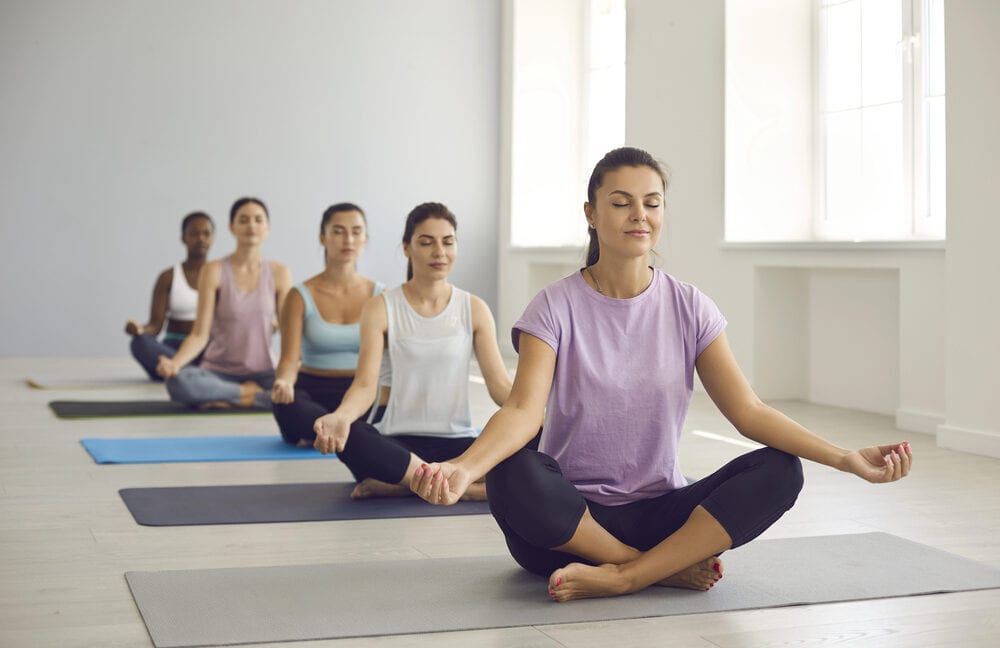Rooted in Rhythm: Yoga and the Power of Discipline

In a world that thrives on speed and distraction, discipline can feel like a lost art. But those who step onto the mat day after day – regardless of mood, schedule, or outcome – understand something profound: yoga isn’t just about flexibility or strength; it’s about rhythm. It’s about showing up. It’s about discipline.
‘‘अथ: योगानुशासनम्’’
अथ:- Now Authority,
योग:- Joining ,Union
अनुशासनम्:- Discipline, Direction, command, instruction advice.
Discipline is a bridge between goals and accomplishment.
The more we commit to our practice, the freer we become. Discipline doesn’t cage us – it liberates us from the chaos of reactivity and the whims of mood. With discipline, we no longer wait for the perfect moment; we create it through presence and perseverance.
Over time, yoga becomes less about mastering poses and more about mastering attention. We learn to direct our energy, focus our thoughts, and choose our responses. We learn to lead ourselves.
Type of Discipline
Spiritual Discipline – Helps in inner growth and connection with higher self or divine.
Mental Discipline – Enhances control over thoughts and emotions.
Self-Discipline (Tapas) – Involves self-confidence ,willpowe , commitment and personal growth
Importance of Discipline in life
- Bring stability
- Promotes good human behaviour
- Increases focus and concentration
- Helps a person live peacefully in society
- Develops a positive attitude
- Teaches a person to be responsible and respectful
- Improves mental health
- Practicing yoga regularly helps in developing mental discipline.
For example, following the principles of Yama (ethical guidelines In yoga) can greatly improve self control and awareness.
- You will begin to notice positive changes in your work, habits, and overall lifestyle.
The Silent Strength Behind the Practice
Yoga, often romanticized for its flowing poses and calming effects, has a quieter, less glamorous companion: discipline. It’s what keeps us grounded when motivation fades. It’s the reason we return to our breath, our body, and our intention even when life pulls us in every direction.
Discipline in yoga isn’t rigid or harsh. It’s not about forcing yourself into a shape or pushing through pain. Instead, it’s a rooted rhythm—a quiet promise to show up for yourself. To stretch, breathe, and move, even when it’s uncomfortable. Especially when it’s uncomfortable Asanas are physical poses designed to build strength, flexibility, and balance. More than just exercise, they prepare the body for long periods of stillness during meditation by fostering physical discipline and awareness.
Rhythm as a Way of Life
Every yoga practice follows a rhythm: the breath, the flow, the pauses.But beyond the mat, rhythm becomes a metaphor for life. When we cultivate consistency, we learn to live in harmony with ourselves. We stop chasing intensity and begin to trust in steady growth.
Ashtanga Yoga begins with Yama, a set of moral restraints guiding our behavior toward others and the world. It teaches integrity, non-violence, truthfulness, and moderation. It’s the rhythm of restraint, essential for personal and social harmony
Yoga teaches us that rhythm isn’t repetition for repetition’s sake—it’s refinement. Each time we repeat a posture or sequence, we’re not simply performing it again. We are deepening our relationship with it. That’s where transformation happens.
Discipline is Freedom
Paradoxically, the more we commit to our practice, the freer we become. Discipline doesn’t cage us—it liberates us from the chaos of reactivity and the whims of mood. With discipline, we no longer wait for the perfect moment; we create it through presence and perseverance.
Over time,in a world of constant sensory overload, Pratyahara is the art of turning inward. It teaches us to detach from distractions and reclaim our inner attention. It’s the gateway from outer chaos to inner stillness. Yoga becomes less about mastering poses and more about mastering attention. We learn to direct our energy, focus our thoughts, and choose our responses. We learn to lead ourselves.
How to Root Yourself in Rhythm
- Start small, but be consistent. Even ten minutes a day creates momentum.
- Honor the process. Growth in yoga, like in life, isn’t linear. Trust the unfolding.
- Commit to the breath. Let it be your anchor and your guide.
- Create rituals. Practice at the same time each day to develop your rhythm.
- Forgive the skips. Missing a day doesn’t mean failure. Discipline includes returning.
Ashtanga Yoga, derived from the ancient Yoga Sutras of Patanjali, is more than just a physical practice – it’s a holistic path to inner harmony, transformation, and self-realization. It’s a journey of eight interconnected limbs, each forming the rhythmic roots of a balanced life.
The Eight Limbs of Ashtanga Yoga: A Path to Inner Harmony

1. Yama – Self-Control (Ethical Discipline)
अहिंसासत्यास्तेय ब्रह्मचर्यापरिग्रहा यमाः॥
The foundation of Ashtanga Yoga begins with Yama, a set of moral restraints guiding our behavior toward others and the world. It teaches integrity, non-violence, truthfulness, and moderation. It’s the rhythm of restraint, essential for personal and social harmony.
2. Niyama – Self Discipline (Personal Observances)
शौचसन्तोषतपःस्वाध्यायेश्वरप्रणिधानानि नियमाः॥
Where Yama is outward, Niyama is inward. This limb focuses on cultivating purity, contentment, self-study, and spiritual devotion. It invites discipline into our daily life—cleaning the inner space for deeper spiritual growth.
3. Asana – Posture (Physical Discipline)
स्थिरसुखमासनम्॥
Often the most recognized aspect of yoga, Asana refers to the physical postures that help stabilize the body and prepare it for deeper practices. It’s not just about flexibility—it’s about finding balance and stillness in motion, anchoring us in the present moment.
4. Pranayama – Control of Breath (Vital Energy Discipline)
सतुवाच्छ्व्रासव्श्वासयोः गतिकिविच्छेदः प्राणायामः
Prana means life force, and Ayama means control. Through breath regulation, Pranayama energizes the body and calms the mind. It bridges the physical and mental worlds, aligning our inner rhythm with the natural flow of life.
5. Pratyahara – Withdrawal of Senses (Sensory Discipline)
स्वविषयासंप्रयोगे चित्तस्वरूपानुकार इवेन्द्रियाणां प्रत्याहारः॥
In a world of constant sensory overload, Pratyahara is the art of turning inward. It teaches us to detach from distractions and reclaim our inner attention. It’s the gateway from outer chaos to inner stillness.
6. Dharana – Concentration (Focused Mind)
देशबन्धश्चित्तस्य धारणा॥
With the senses withdrawn, the mind learns to focus. Dharana is the practice of single-pointed concentration—holding the mind steadily on one object or thought. This focused attention becomes the seed of meditation.
7. Dhyana – Meditation (Unbroken Flow of Awareness)
तत्र प्रत्ययैकतानता ध्यानम्॥
Dhyana is the flow state—when concentration deepens into meditation. It’s not just about sitting still, but about being deeply present, observing thoughts without attachment, and feeling rooted in the rhythm of awareness.
8. Samadhi – Blissful Absorption (Self-Realization)
तदेवार्थमात्रनिर्भासं स्वरूपशून्यमिव समाधिः॥
Samadhi, is the culmination of the yogic path. It is a state of profound union with the Self, where ego dissolves and pure consciousness remains. It’s the rhythm of liberation—complete discipline and inner freedom.
Beyond the Eight Limbs
While the eight limbs form the core, Ashtanga Yoga also incorporates other powerful tools that enrich the practice:
- Meditation – A harmony of mind, body, and soul.
- Bandhas & Mudras – Energetic locks and gestures that channel prana (life force).
- Mantras – Sacred sounds or chants that elevate consciousness and purify the mind.
To be rooted in rhythm through Ashtanga Yoga is to live with awareness, intention, and alignment. Each limb is a step on the journey inward, guiding us from discipline to liberation. Whether you’re just stepping onto the mat or deepening your spiritual path, let this rhythm ground you, uplift you, and bring you home to yourself.
Final Thoughts
Discipline isn’t about force – it’s about devotion.
It’s the quiet, consistent commitment to your growth. Through yoga, we learn to root ourselves in a rhythm that nurtures strength, steadiness, and inner peace.
So the next time you unroll your mat, remember: you’re not just practicing poses. You’re practicing discipline. You’re choosing rhythm over chaos, presence over distraction, and alignment over avoidance.







Responses